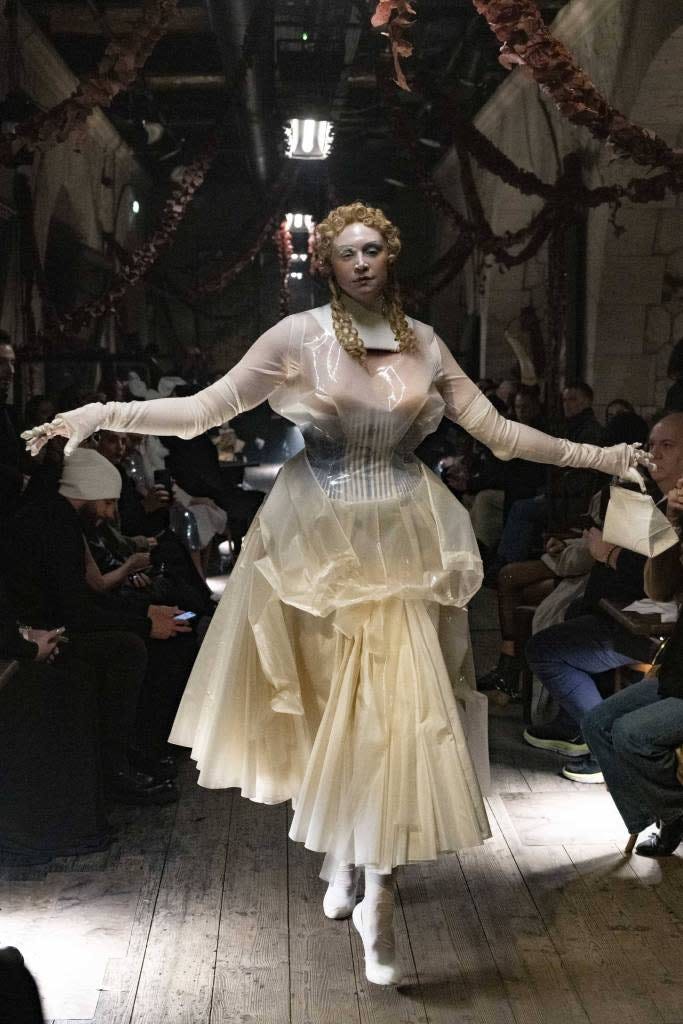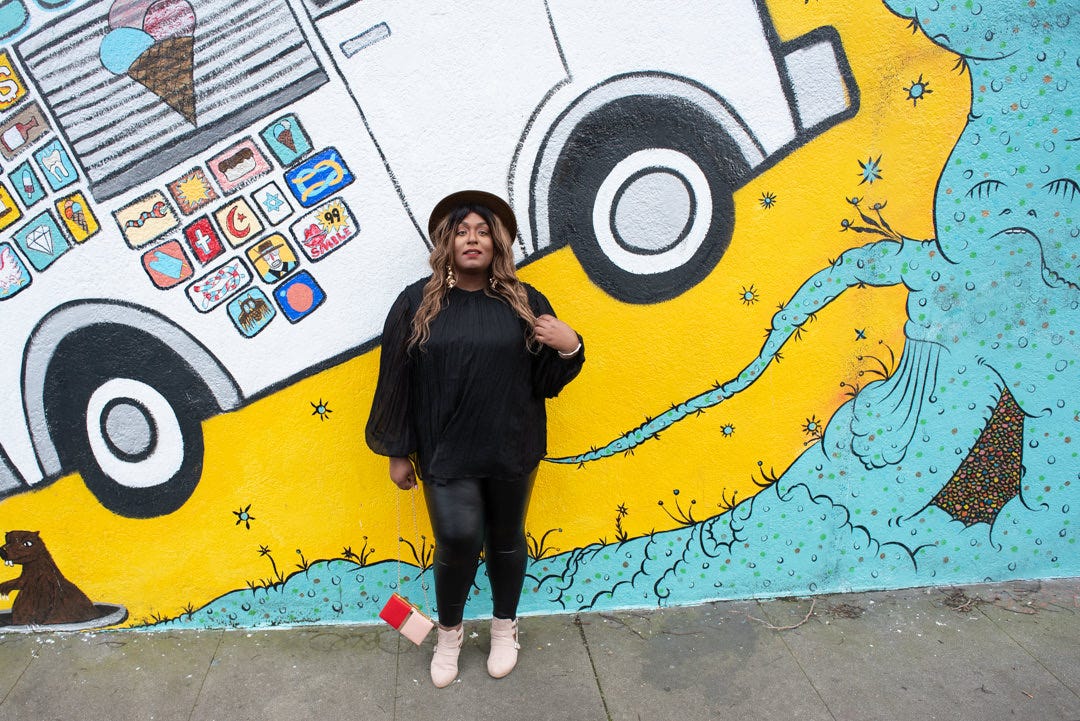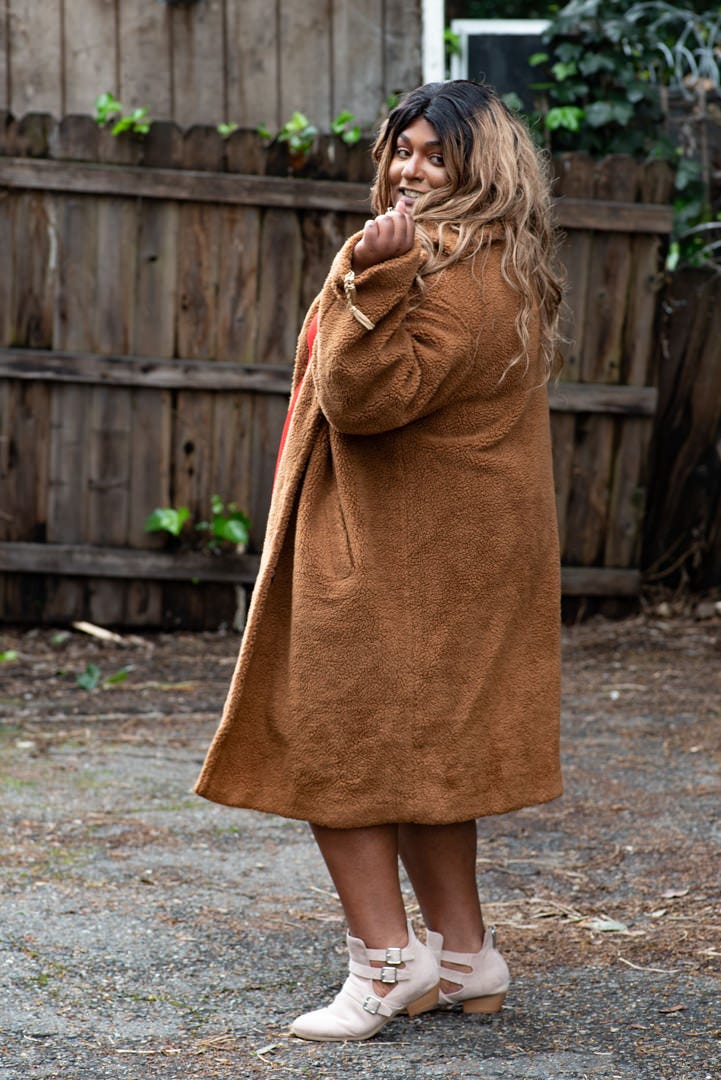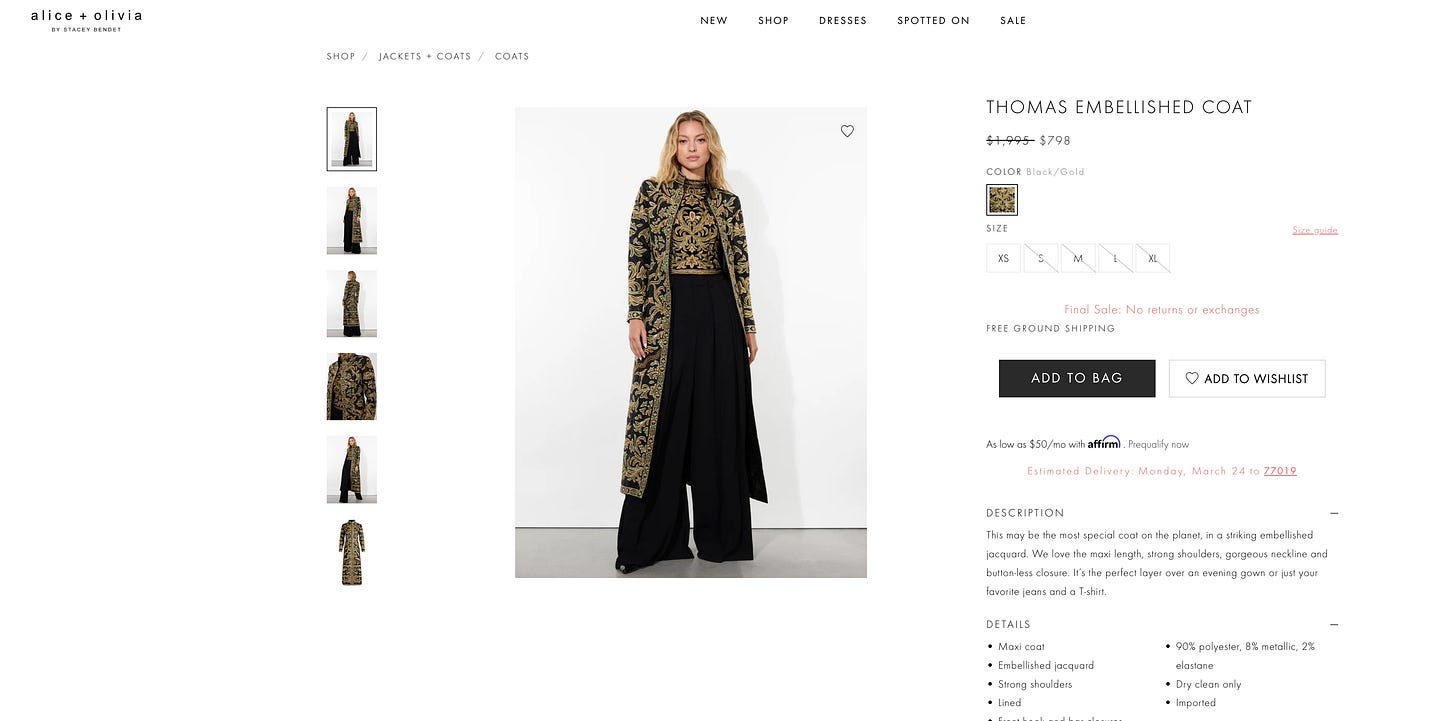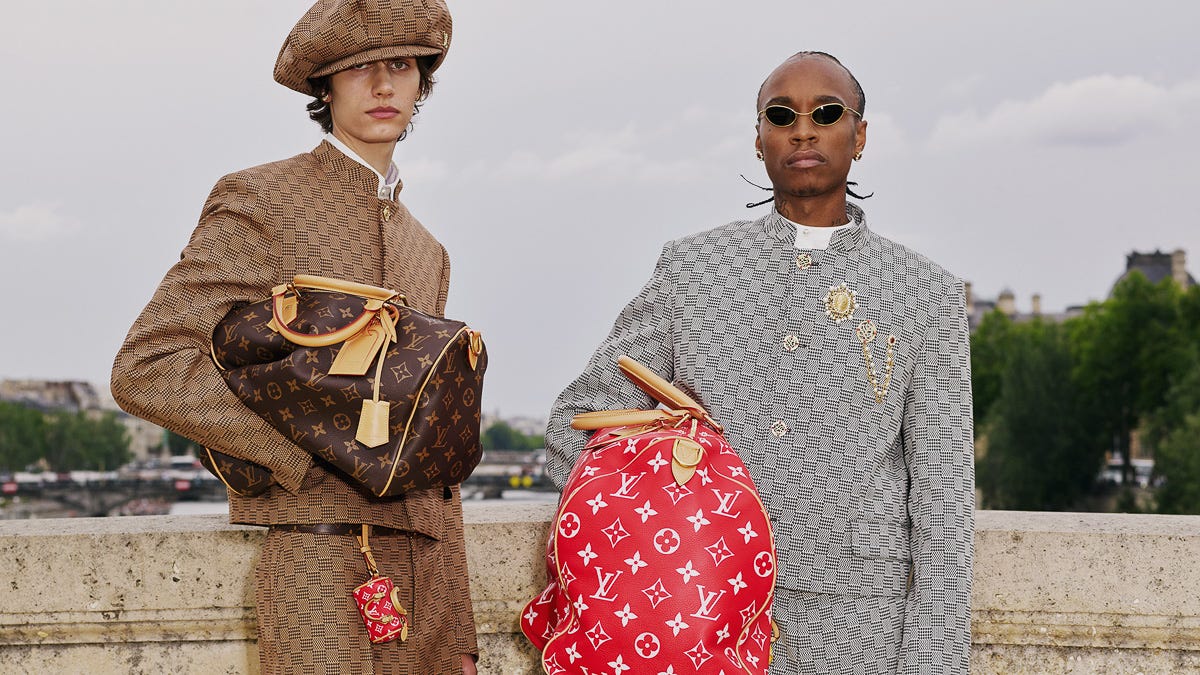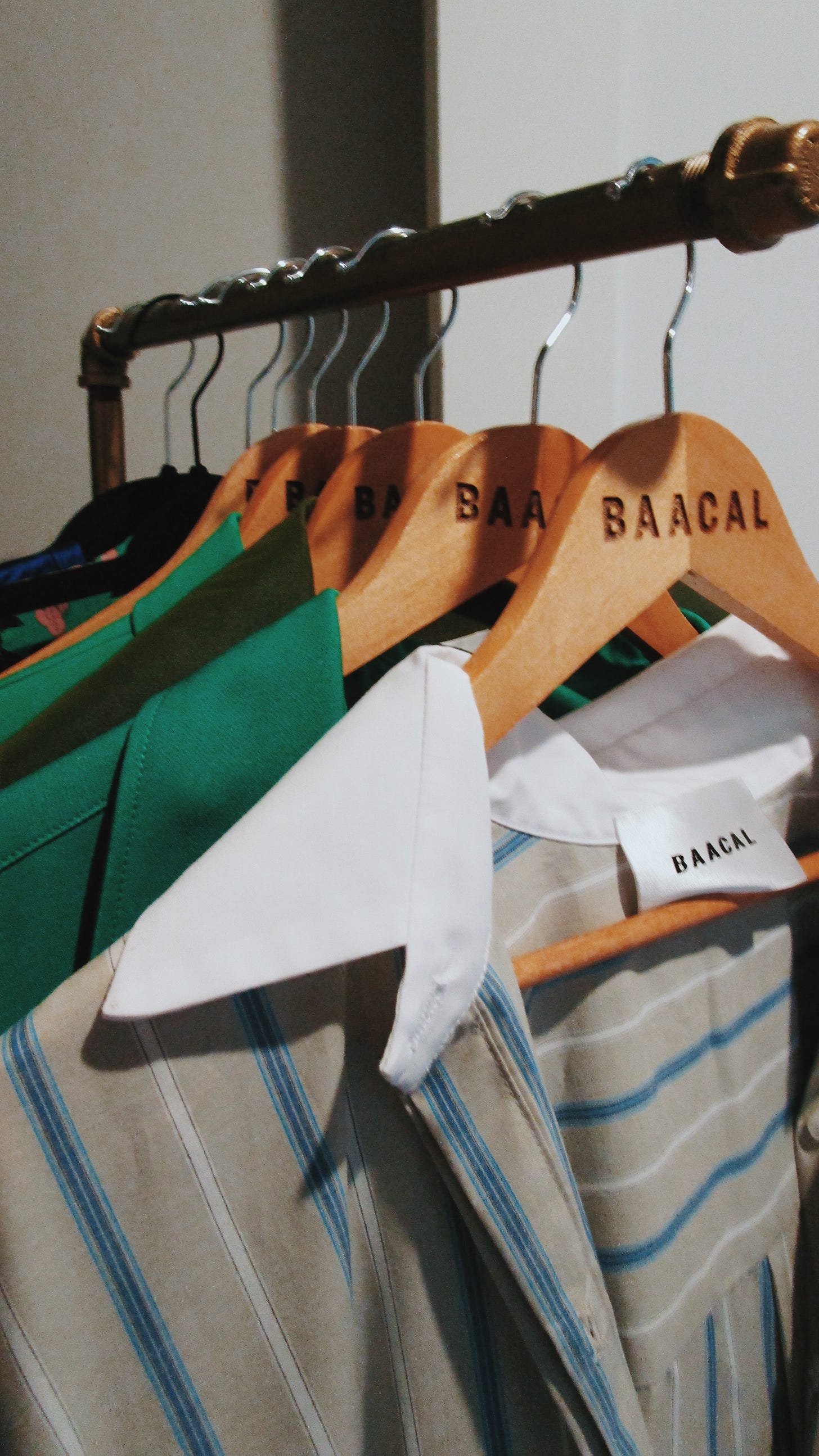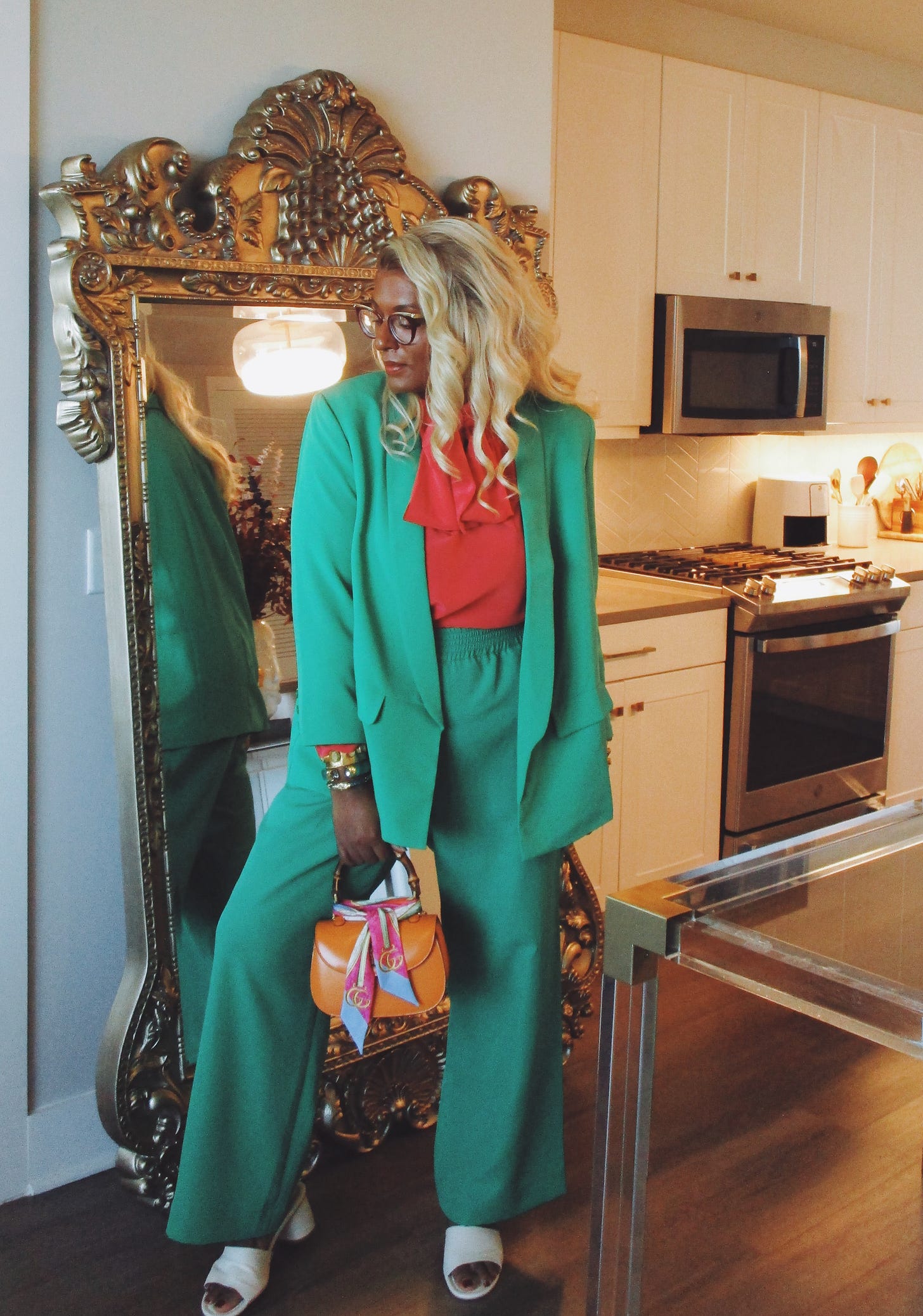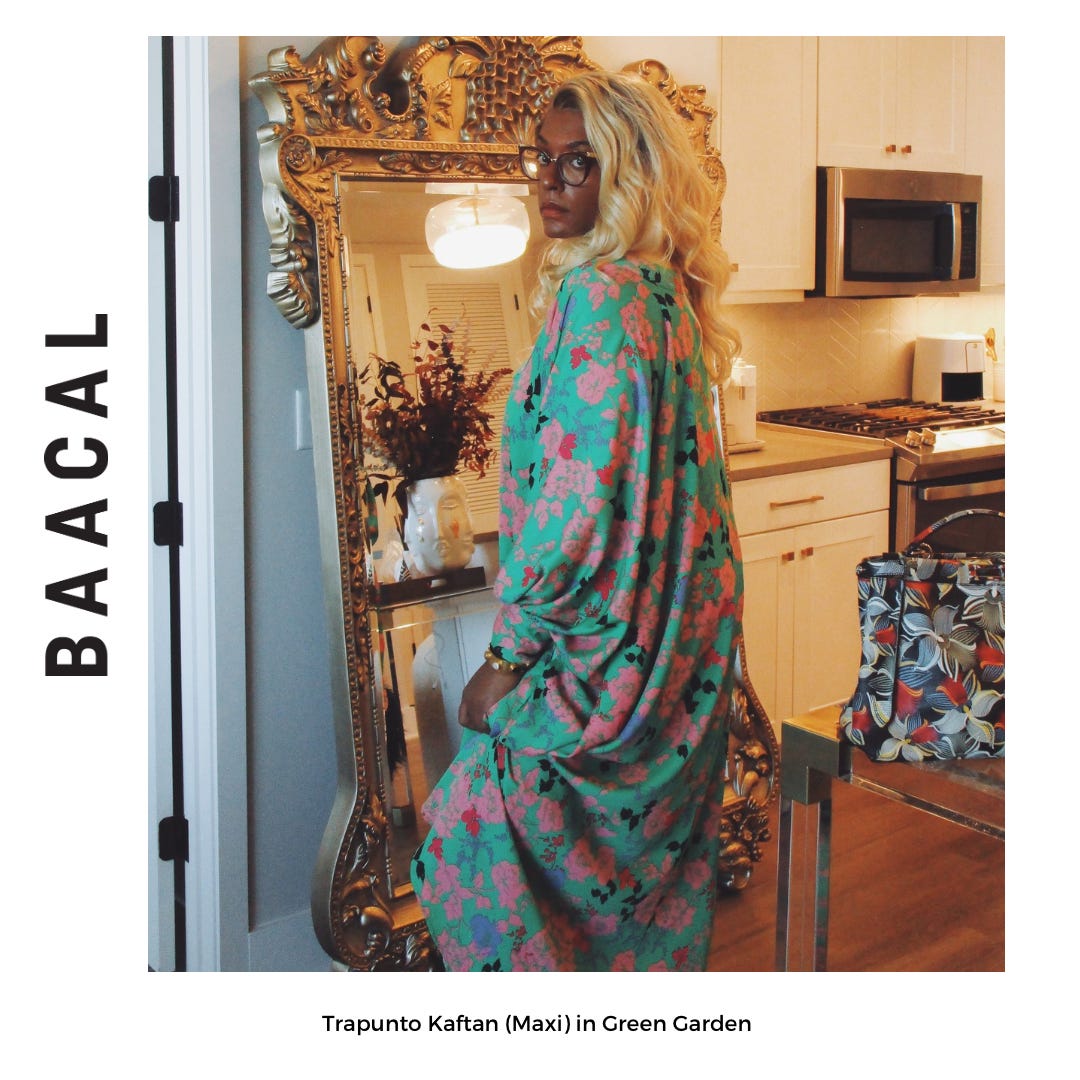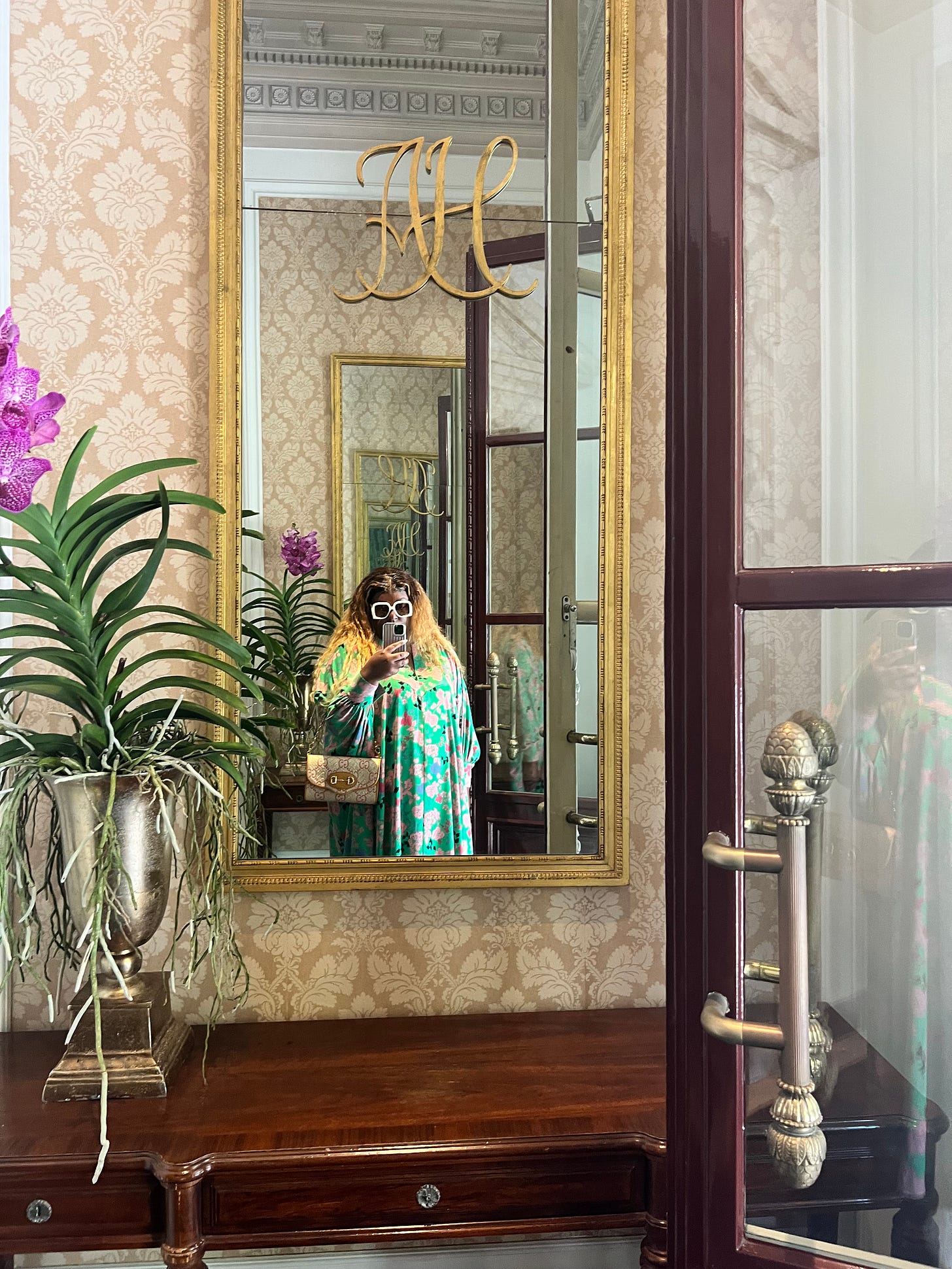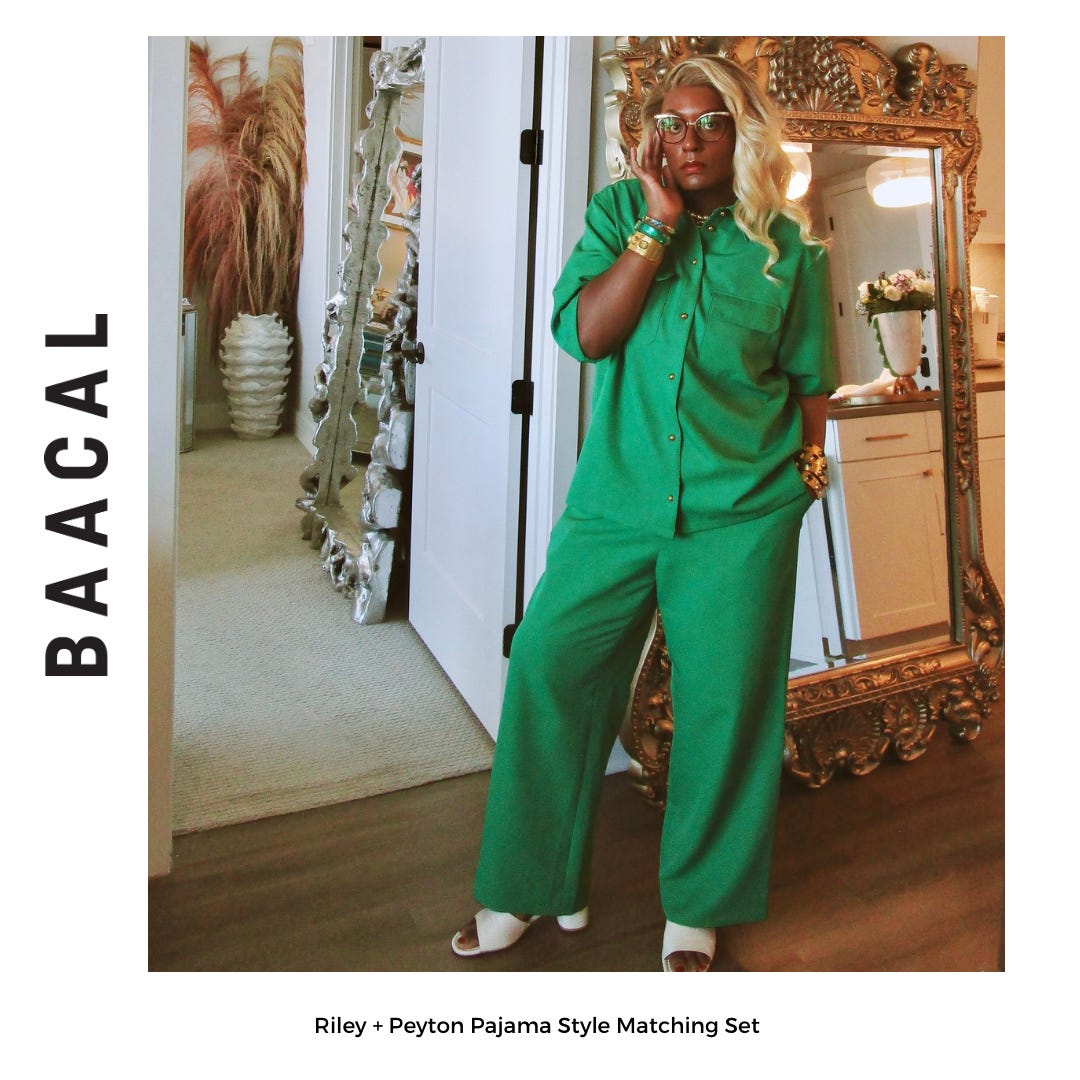My Journey To More Sustainable Shopping, Living With Less & What Does It Take To "Woo" Plus Size Consumers in The Apparel Marketplace?
I thought I needed more, but life taught me how to live with just a bit less.
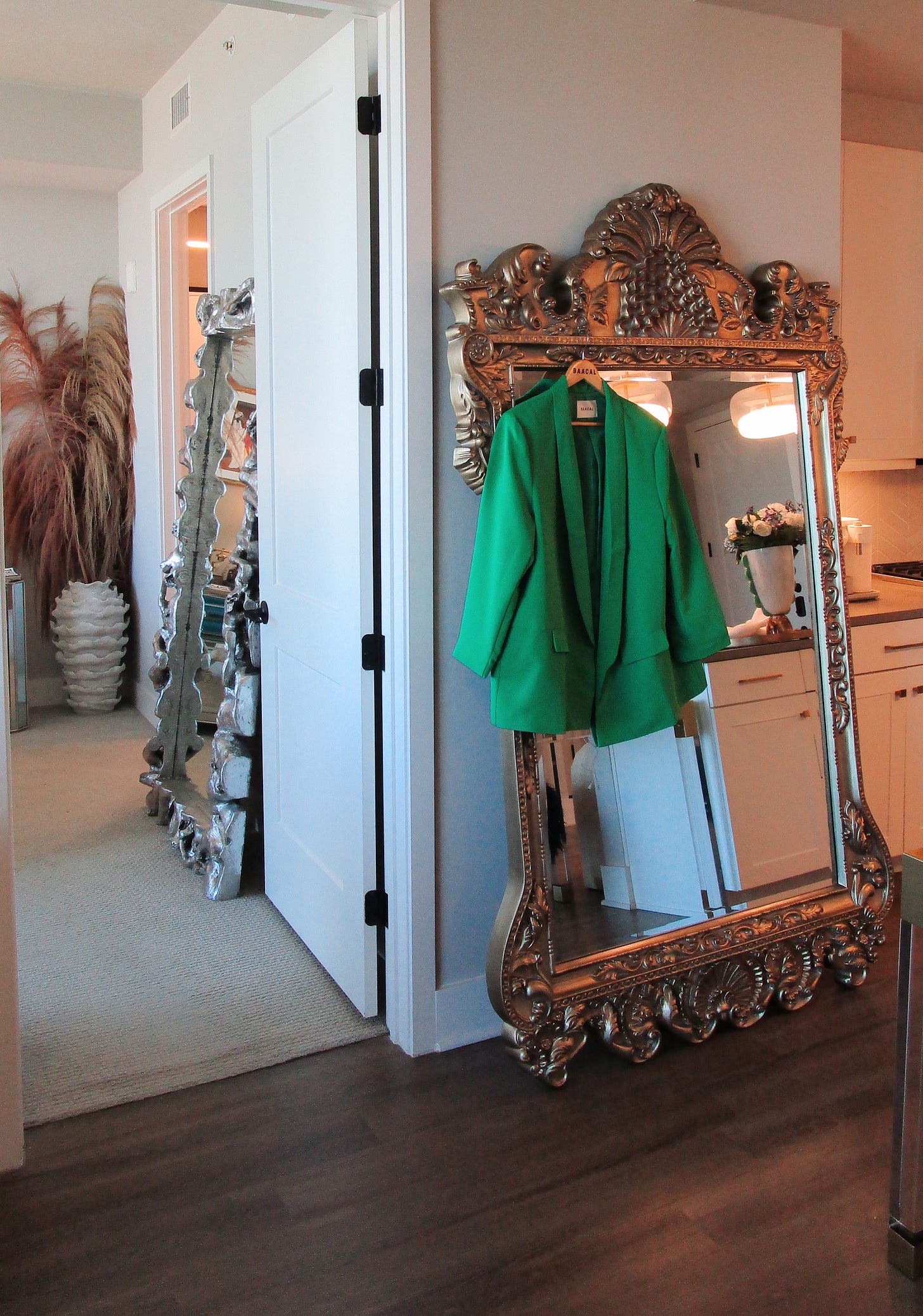
Hello Lush Life Friends:
I’ve always been enamored by the runway.
Fashion was my escape from the world, as a child, sifting through magazines and coffee table books: the images and essays transporting me to another place, and at times, another universe.
The messages that a crinoline midi dress in a periwinkle blue from Alaïa can signal about the political climate and aspirations of society were always more obvious to me, than watching a political debate on CNN.
While I love literature, there has always been something about the power fashion has had on my life and imagination in its ability to tell stories, or be a reflection of the world and the nuance and complexities.
Fabric, draping, darting, silhouette, juxtaposition, scale. Setting and placemaking and even the details of contour and shadow in the makeup used on models- share a perspective on life, a life well lived, and the consciousness of the ways of the world we live and love in.
Fashion as literature.
Wearable art.
The ways that garments tell stories.
I think of this experience perhaps far too often.
While I love the fantastical expression of fashion- I am equally enamored by the ways that contemporary designers approach their work. How they design, for the every day. Why they decide at some point in their career, to design quality clothing for the masses as opposed to a select few. I think I’m also intrigued about the duality that they have to hold- designing with a piece of fantasy and aspiration, whilst also providing function.
Romancing “the ordinary”, is an art and science, as I’ve learned over the years, that contemporary designers seem to have eloquently mastered.
Let’s be radically honest: only a select few can afford to actually wear what is on dancing on the runway. Unless you’re me and have decided to go broke a thousand times for the sake of art, the reality is that most designers in the jurisdictions of France, Spain, England and Italy (and Belgium too!) are considered aspirational.
Not wearable for the everyday, reserved for the select few to wear for select moments of their lives.
Why I Divested From Fast Fashion Retailers
There’s an exciting space in contemporary fashion when a designer pairs that level of technique and perspective in sync with their peers- and translates pieces of that for the everyday. The woman/femme who simply needs a coat- a good coat, that she/they will wear day to day. One that’s reliable, well made, considered- but functional. Fashion forward? Sure, but the priority is probably more focused on function, or rather, utility.
You can go to H&M and buy a coat that satisfies that need, but overtime you start to analyze what’s wrong with the coat as opposed to what’s right with the coat- as has often been my experience with fast fashion. I love the look, and I love that ticks off my list- fashion and function.
Then- two months later, I’m questioning why I still have it?
The fabric wrinkles in a way that unless I press it out on the ironing board, it looks a mess.
The buttons are haphazard, and one fell off two days after buying it.
The pockets are shallow, and the tie waist is too short, so I nixed it but now it looks funny either way these extremely large belt loops dangling at my waist line.
It’s an experience I kept doing over and over and over again.
They say insanity is doing the same thing over and over again and expecting different results.
In 2018, i realized that year that while I was being conscientious of my public servant salary and the cost of everything- I had bought 4 coats from ASOS that turned out to be duds. 3 of which I never reached for, and 1 that began to experience severe balding as it was a polyester “faux hair” coat.
For what I paid in total that year on multiple coats- I could’ve bought one well made coat.
That year I learned the difference between “expensive” versus “costly”. This idea that something is only expensive if it does not live up to what it costs.
In contrast, something being more costly upfront- and then becoming a hero piece in my wardrobe that I reach for everyday?
Well, if you’re me, you feel like you practically got it for free! (just kidding).
But it was my first brush with a reality that I had to interrogate in my own life: what does abundance actually look like?
It’s a question I contend with even now, all these years later. Once upon a time, a closet stuffed with clothes meant I was well to do. Now, my sensibilities have shifted and redirected in so many ways. But I have to honor that that was my outlook in life, informed by my upbringing.
Learning To “Live With Less”.
The task that contemporary designers- the designers not showcasing on the runway and not selling “aspiration” or rather, “inaccessibility”- have to bridge the the need for romance in our wardrobes- and our desire to have quality goods that we can wear until the wheels fall off, at an accessible luxury price point.
After an unofficial focus group where I convened friends on Facetime to ask what drives their decision to purchase somethings over others, left me baffled. Most of my friends are plus size, and gain the majority of their wardrobe from brands like Eloquii, Fashion Nova, and the likes.
While I don’t judge (I do when it’s Shein! or Temu), they often banter that I am in a different place financially, than them.
While once upon a time that was very true, and I had a very clear boast of abundance, things have shifted as they sometimes do.
I once upon a time converted my master bedroom into a walk in closet, and perhaps an enviable collection of over 75 luxury handbags from the designer fashion houses people know and love.
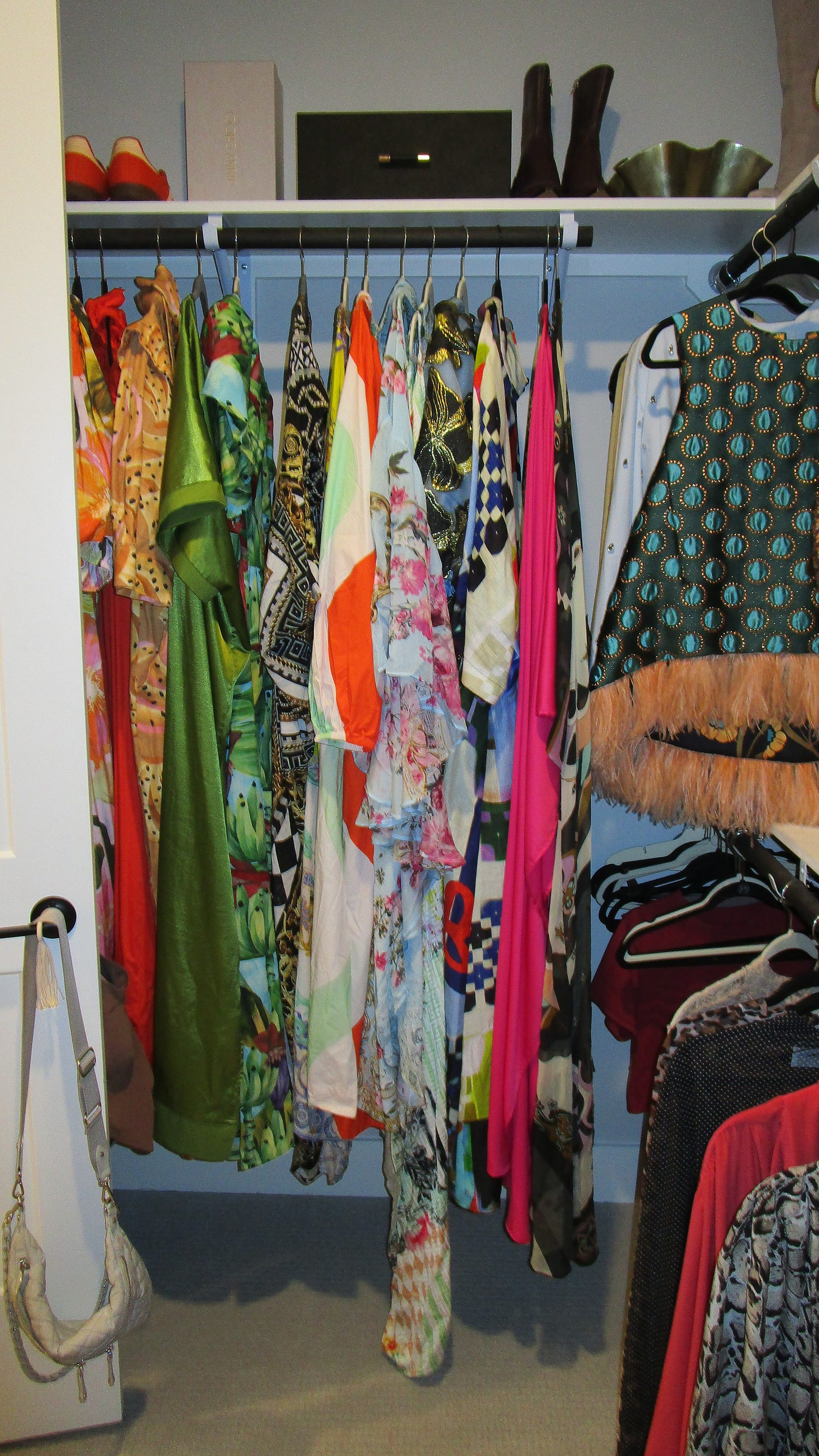
However, that experience has drastically changed.
Now, I have far less (85% less clothing) than I once did, and that handbag collection was whittled down to the top 10 bags I couldn’t live without. The rest were re-homed, and sold to pay for my living expenses the past few months as consulting opportunities dried up in a wave of anti-Diversity, Equity and Inclusion, which was the bulk of my livelihood.
Thank goodness my closet was able to feed me in my times of need!
But in relation to my friends, who have guaranteed salaries and health insurance- they actually have and hold 20x more in their wardrobes and I.
They are right: my pieces are a bit more expensive. I seldom shop fast fashion, I’m not a fan of malls so I don’t impulse shop at places like Free People or Anthropologie and I do consider items I buy more intensely before I pull the trigger.
While some might see my situation as a downturn in life, I have to confess that in many ways it was the cathartic experience I needed to reimagine what success looked like for me.
It forced me to ask the hard questions I needed to ask, resolve parts of the why, and shed my former life and career I knew like a second skin, and begin anew.
I have never felt more successful, more abundant, in my quest to live with a little bit less.
Why Do We Shop Where We Shop?
While my sensibilities are in contrast to most people who decide to buy something that catches their eye- I think it’s a brilliant case study that has yet to be explored a bit more.
Why do we shop where we shop?
What makes us justify some things over others?
How do we decide what is worth buying and what is worth doing away with?
How does one truly “woo” customers to the storefront? While I’m driven for a check list of quality fabrics (that’s been the drive for my consumption)- many more are on the hunt for the bargain.
Do most people care about fabrics? No.
I know this because now that I am able to shop in the straight size brands (size 0-12), I’m intrigued that people are buying 100% polyester coats from Alice & Olivia for $900.
I think that’s a scandal, but I imagine their customer base simply wants cute items with a brand that has more “cache” in the marketplace.
What I might see as a rip off, is what others see as a discount. Perspective is everything.
For all we know, the customer base at Alice & Olivia could typically be purchasing from other brands at a different price structure, and see Alice & Olivia as their H&M.
In the reverse, Banana Republic is my version of H&M- even if at times I feel the price mark up is insane considering many of the same styles and fabrics are significantly cheaper at GAP.
So, how does one “woo” customers to consider other options in the plus size apparel space?
What is the barometer for someone like me to spend $500 on one coat versus a friend who has bought seven coats for $60-$80 a piece?
For a contemporary designers, I imagine that it’s harder to fill that space than that of being a designer for Margiela or Louis Vuitton where there is a “status” quotient baked into the marketing, imagery and cultural cache of branding and the clothing, and consumers are more objectively able to justify the price.
As a contemporary designer- the cache is completely different, more along the lines of hidden gem, and the first thing consumers point at is the question of “why this price”?
I will remind myself to tackle that in another musing at a later date.
How Will Plus Size Luxury Brands Stay Afloat Amidst Luxury Slow Down?
You know who gets impacted the most by luxury slumps? Small, independent brands.
*Affiliate Links: I want to be transparent about how I earn a living. My curated edits feature affiliate links, which allow me to retain a commission for creating and promoting my content, and items I love, sort of like a referral fee. Should you decide to purchase, the brand is responsible with sending me a small commission for plug and promotion. This of course, is at no additional cost to the consumer.
*Sponsored Post: A portion of today’s musing is lovingly supported by/sponsored by BAACAL. I’ve been a fan since it’s debut, and a longtime customer over the years, and I’ve shared with you all my love for the brand over the past few months. Be sure to subscribe to their socials :-)
BAACAL’s Role in My Journey To More Sustainable Shopping
BAACAL enters the chat, at a time where many independent brands are shuttering, yet they are still standing.
Sustainability in fashion has become completely greenwashed- yet the brand and its designer, Cynthia Vincent, have been zeroing in on ethics in fashion labor, refusing to outsource labor to sweatshops, opting to produce, manufacture, see cut and stitch in Los Angeles.
On the sustainability side, the designer and her team source fabrics from independent fabric mills and shops in Los Angeles, in person, at a time when fabric stores are closing nationwide as more and more designers are outsourcing labor and production abroad.
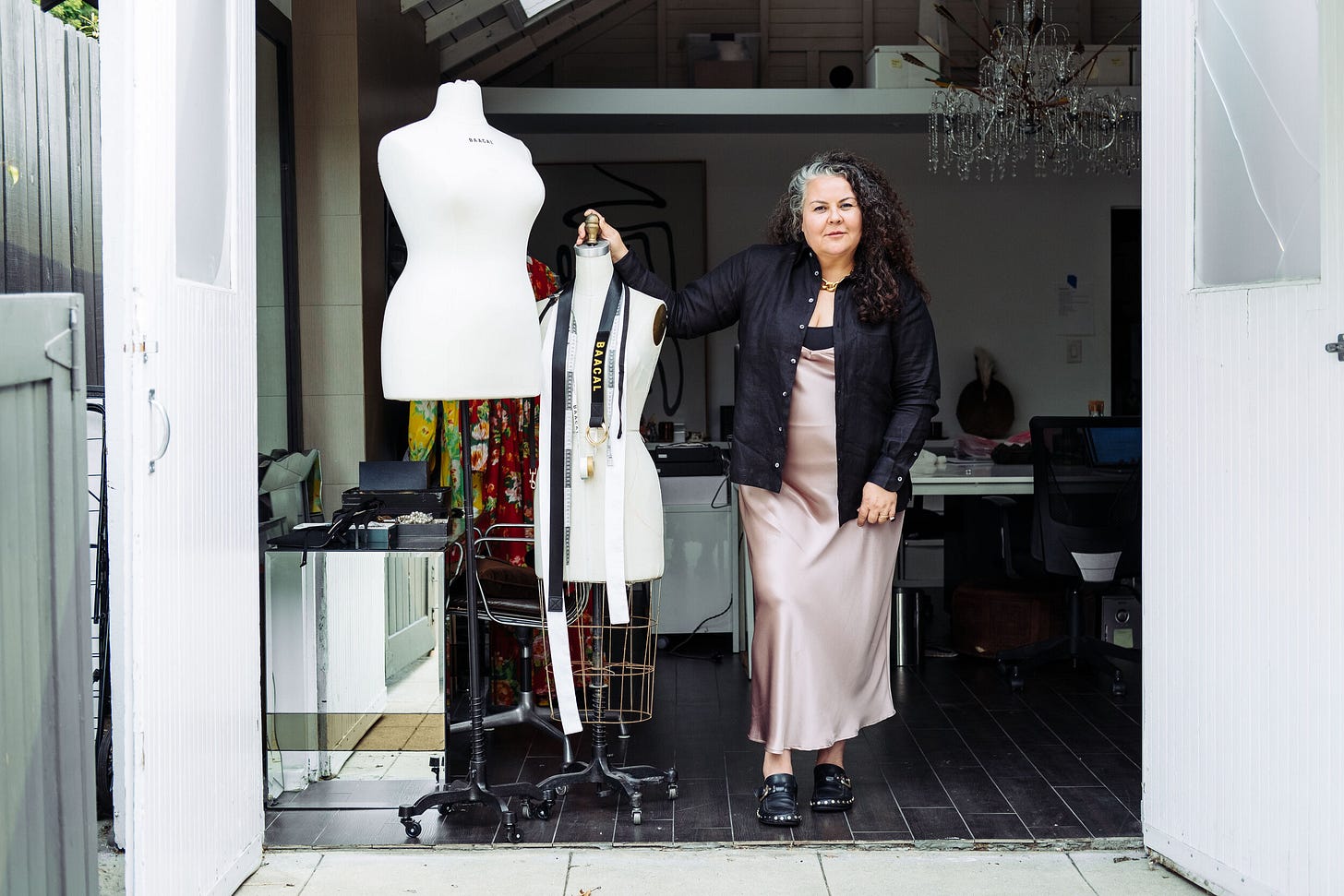
Opting to support and sustain fellow local businesses in spite of overwhelming convenience of ordering cheaper bundles of fabric online is an unspoken testament to how deep the commitment goes.
Then there is the reality of contemporary plus size fashion: where it is perhaps more normalized for us as mid size and plus size women than other segments of the population- to purchase a coat or a dress or even a wedding gown from Fashion Nova or Eloquii, Anthropologie or H&M- because of scarcity in accessible prices and size options.
Every one is ranting on the inflation of the price of eggs- but for me, I was adversely impacted the other day when I was charged $4.70 for one avocado.
While we’re shell shocked by looming tariffs and the costs of goods rising, people still spend $1000 on iphones, and buy brand new cars off the showroom floor with $1000 a month car notes.
Is there more nuance and deeper scrutiny when it comes to clothes? Our iphones don’t really hold resale value, and trading in a car feels like an loss on ROI (return on investment).
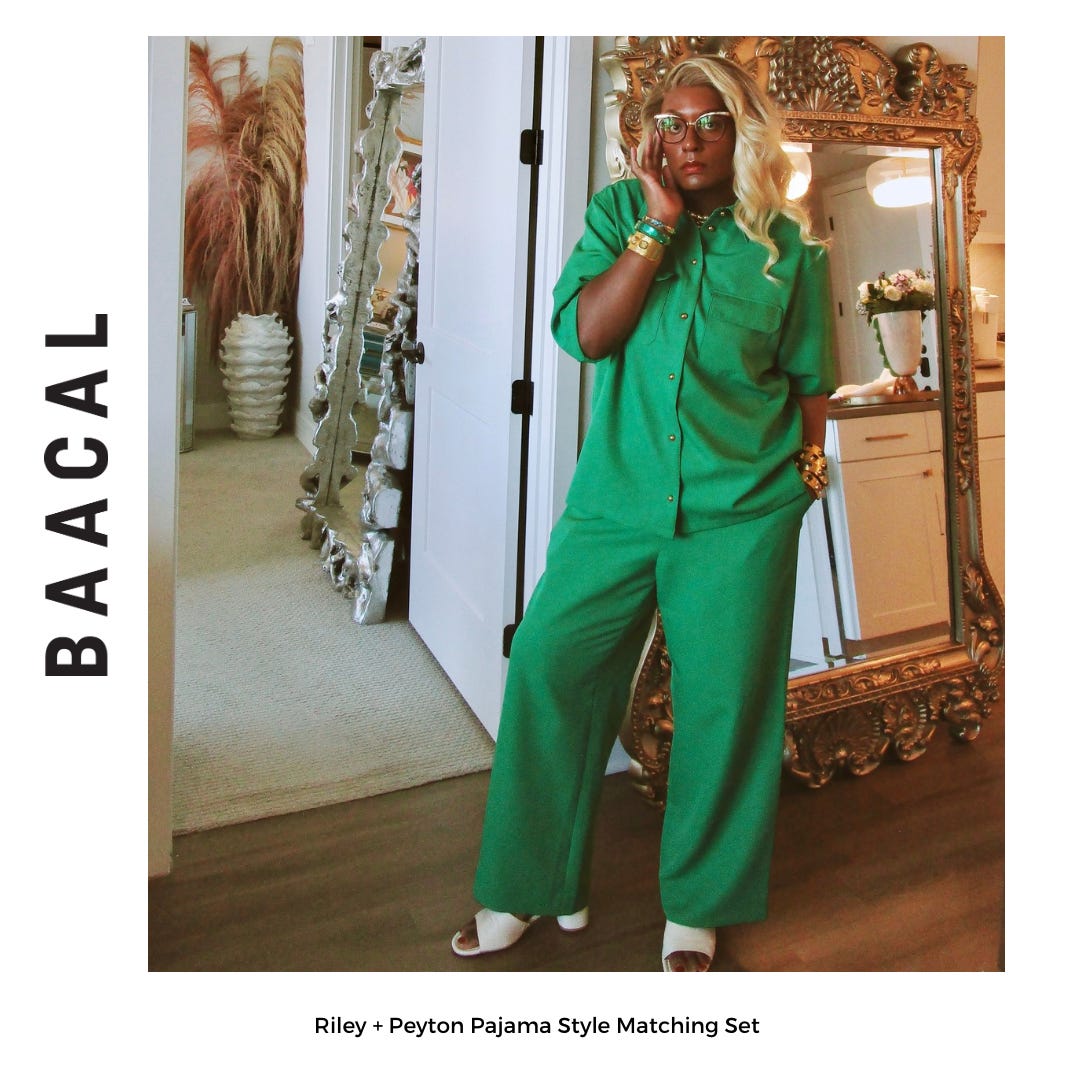
What does It Take to “Woo Us” to Shop Independent?
I’ve tackled that in a previous musing, around the emergence of more luxury apparel designer brands focusing on plus size consumers- but I also think the deeper reality we don’t talk about is how plus size people have never been “wooed” in fashion.
While I didn’t grow up being plus size- I know so many plus size women and femmes who have lamented being plus size in their youth, having to choose between the lesser of two evils (much like Presidential elections) ; seeking the most viable option at an affordable price, but more importantly, sifting through racks of clothes to find something that actually fits.
It’s a reality most plus size women and femmes have had to contend with for so long, it’s a second skin. “This kind of fits. so this will do”.
Very rarely has the experience been “we offer several pants in different silhouettes in fits and have all of your sizes, which would you like best”?
If it has existed, it’s still been more nuanced. When I was a size 28/30, i stared at 2 babydoll dresses inside of a Torrid store in Virginia for work.
*I hate babydoll dresses* i thought.
I also hated the idea of skull and crossbone prints on the dresses, but the brand apparently also created underwear to match.
I bought them anyway. Why? (not the underwear!)
Because it was available to me. Was the fabric terrible? Yes. Did I find joy in it? No. But something was better than nothing at all- a hill we often die on in our day to day lives- be it with sartorial pursuits like me, or buying that fixer upper home you don’t have the budget to actually renovate, but you know- something was better than nothing.
So You Want The Row... In Plus Sizes.
*please note today’s post contains affiliate links. While this post is in no way sponsored and I’m not affiliated with the brands mentioned, should you be enticed to by, Aria, your stylish friend wil…
I’ve discussed at great length, my experience of finding small, independent fashion houses led by and designed by plus size women of color themselves, for plus size and mid size women and femmes themselves.
It came at a time in my life where I felt I deserved so much better than what I was being served and what I thought was available to me.
I had the validation and accolades in my profession, but I didn’t have the wardrobe that matched my personal expression.
I searched high and low, evaluating brands on their ethos, craftsmanship paired with price point, level of design and fit.
I was a woman in a mission. Desperate for quality. For something other than what I felt I had been conditioned to accept.
What I found was a unique experience where I wasn’t shopping all the time. I love shopping- it gives me the thrills to find something special in a sea of monotony. It’s a sport for me and I happily rise to the challenge.
Find a $500 blazer on sale for $99? Sure. I got you.
Find a silk dress in a bold color that wedding you have to go to that no one else will turn up in? Mmhmm *files nails*.
Find you a gown you’ll happily wear again and again to the events life sends your way? Yup.
But shopping better made clothing forced me to reckon with the reality that I actually didn’t need anything.
It was an unexpected paradigm shift that showed me that now that I have 3 really well made coats, anything else was me being greedy.
All these years later, I’ve opted to zero in on that experience, downsizing my wardrobe almost completely and converting to extremely well made, higher quality pieces, that I wear over and over again.
As much of a fashionista as I am, people are completely surprised that I don’t have nearly as much clothing as one might think I have.
This way of living has helped me not just financially, but also in how I see the world. In a world that has trained us to eventually dispose of the things- old iphones, old CDs, in favor of optimization- when you’ve converted to better made, the need is then fulfilled. Anything beyond that is icing on the cake.
I treat my fashion forays like I do with furniture in my home. I don’t buy a couch every season- I bought a couch I really wanted, financed it and paid interest for it. I intend on keeping it forever.
Recently, a friend spilled hot sauce on it recently (my sofa is white!).
The way that i steamed, scrubbed and lifted the stain out of the fabric is the way I treat my couture now.
If I want something new, I have to trade out or sell in order to justify adding. There are exceptions to every rule, but this has helped me for the past 2 years in keeping a lid on the shopping addict that I often am, and have a better harmony with how I spend my money, and why.
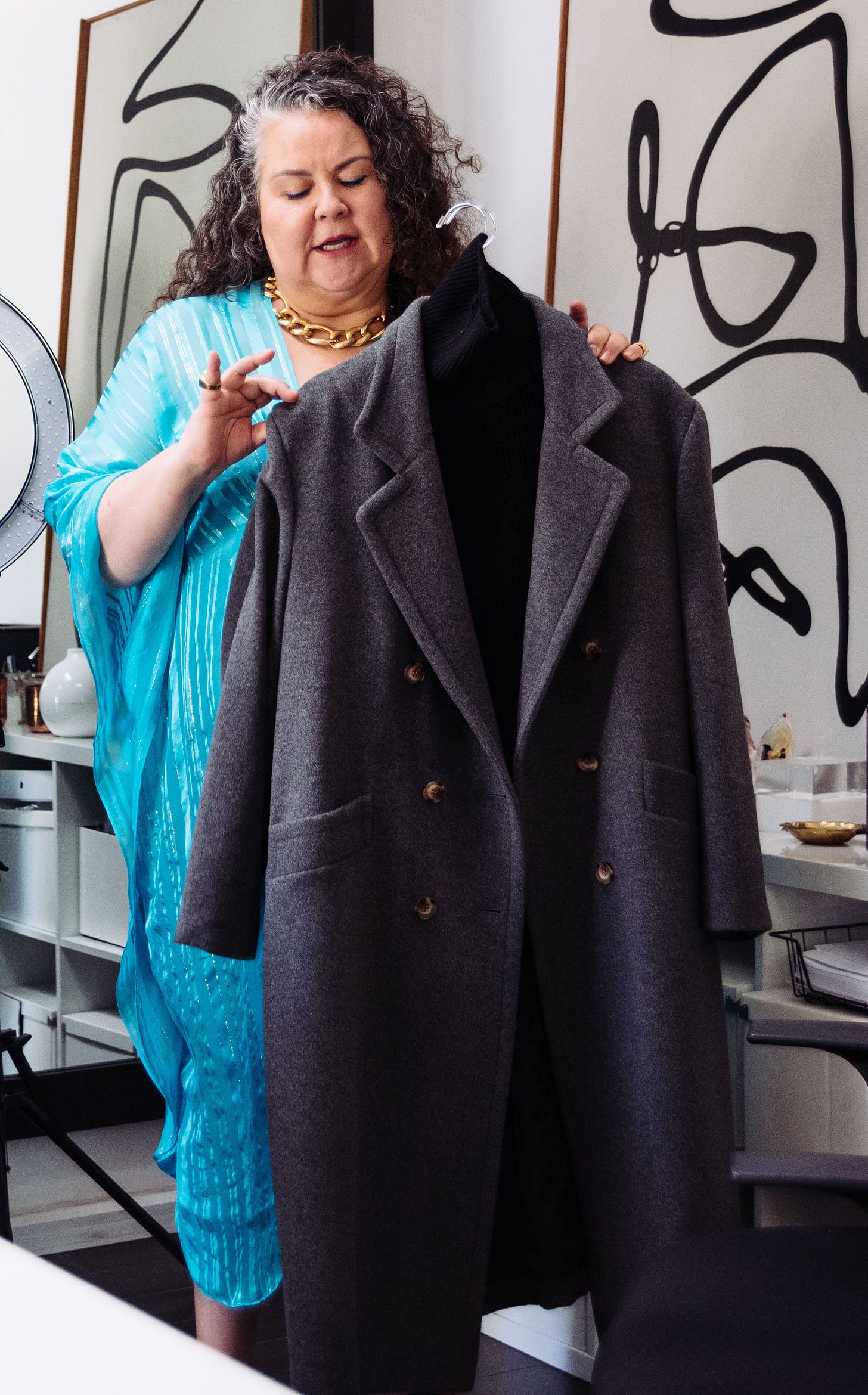
When I talk to Cynthia Vincent, I’m intrigued that as a designer whose business model is to sell, sell, sell- she doesn’t actually want you to buy 20 coats from her. I mean, she’s not going to say No.
However, she does quite often reference on how/why she designs pieces for BAACAL to last. She wants you to buy 1 or 2 coats, 1 or 2 pants, and so on.
It’s in her best interest- both for her as a designer and for a brand, that you love the pieces and the quality long after checkout.
There is considerable thought put into certain pattern making and stitching to ensure the garment actually lasts.
Certain fabrics are considered and prioritized over others in case someone decides not to dry clean something, and throws it in the wash.
Lining is considered to factor in sweat, movement, and how we live day to day in certain articles of clothing.
Pants have fashion forward function- extra buttons on the side panels in case someone’s weight fluctuates in between sizes, and they need a looser or tighter waist fit.
Elasticity in the waist bands are strategically placed to sit without gaping so that you don’t have tightness in the thighs and loose, falling fabric in the waist.
In my conversations with her, she references that her greatest joy is creating items that women will wear time and time again in their wardrobe and be just as happy when they wear it as when they bought it.
It’s countercultural to a world that keeps pushing new, new, new. Out with the old, in with the new.
She still proudly sells select pieces from BAACAL’s debut collection- a reminder that when the fabric, quality and design are truly there, it doesn’t matter when it was released so long as it inspires and performs well for our lives. There’s no expiration on quality.
I think it’s inspired me to reconsider how contemporary designers approach the fashion industry at large.
How does a brand like BAACAL continue to woo its most loyal customer base- the converts who stumbled upon the brand and found the missing link in their lives when it comes to clothes? '
The combination of fashion, function and practicality but also desire. The drive to be the most optimized and best version of ourselves- especially in an era of conversations on semaglutides and shedding pounds, while also recognizing that we as plus size people, will always exist.
And who serves us when we exist as ourselves?
I’ve been fortunate to be every size on the BAACAL size chart, and have come back to the brand time and time again, even now with seemingly more options at a size 10/12.
I’ve been shouting from the rooftops about the brand since I discovered them, and am happy to continue to shout about just how good I think they are at being a brand you might consider adding into your closet.
Intriguing, if you think about it- that the internet gives us a pantheon of options, but we only utilize a portion of it.
Every day we log on to the world wide web- the idea of an abundance of resources and books and perspective abounding, but often default to the same few celebrities we all follow on instagram or tik tok.
We default to the same television networks, the same channels, the same audible books or podcasts. Very rarely do we search for something new. The novelty gets lost.
There are thousands of short films from incredible filmmakers available for free to stream on Youtube that we don’t think to look to for new shows.
Netflix is genius- its algorithm shows a carousel of selections, offering the illusion of choice whilst propagating the content and films it’s exclusively produced.
We have no idea that we have a pantheon of options right in front of us, accessible to us by a click of a button.
I imagine my role is to spice things up on your timeline.
I’m perhaps foolishly hopeful that I might help foster a bit more novelty, enchanting discovery of something you hadn’t considered. Something that, should you buy into, romances your day to day life.
Frankly, no one feels like a cubicle is their dream workplace. No one I know feels inspired that experience. But we perform in that, anyway- and the smaller things- the tiny details, I find, make life a bit sweeter.
I hope my musing today added a little spice- an unexpected dash of cinnamon to your morning coffee if you will.
As always, if you’ve made it to the end, THANK YOU :-) And thank you for subscribing!
Be sure to visit BAACAL to see more and learn more about Cynthia Vincent’s work as a designer too.
You can shop my edit for the Spring Capsule Collection at BAACAL on my LTK.




